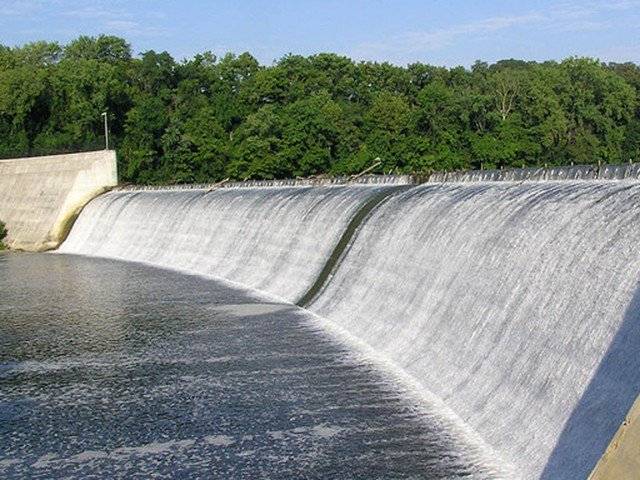What encouraged me to search for the elusive consensus on KBD Project was the research conducted by Ms. Sjomander Magnusson, Director Trans-boundary Water Management of Stockholm International Water Institute (SIWI). She takes into account all water disputes, inter-state or intra-state and concludes that dooms day scenario of looming water wars propagated few decades ago does not reflect the current scenario. The main reason she propounds for the subtle and slow change was the recognition of water as a public good commodity. Human progress on the road of civilization has taken us far from the days of Mark Twain who feeling disillusioned about American water disputes wrote sarcastically, “Whiskey is for drinking and water is for fighting”.
Water disputes between nations and regions are not a new phenomenon. But with the advent of technology to tame rivers and build water reservoirs, conflicts surged to a new level. Lower riparians were always suspicious of the intentions of the Upper riparians on building of dams as that could restrict or disturb the flows in the Lower riparian areas. The disputes led to development of legal principles to safeguard the historical rights of water users in lower riparian regions.
It was predicted that water disputes on the rivers and waterways which are common between the states and regions would lead to armed conflicts. However, history proves otherwise. On most occasions countries were able to resolve the issues through durable treaties and cooperative agreements.
In a country like Pakistan where difference of opinion on water issues is considered irreconcilable, the successful resolution of international water disputes should greatly encourage us to explore the possibility of also developing a consensus to resolve the outstanding disputes on water issues including the storage project at Kalabagh.
Let me quote an incident of short sightedness on our part which adversely affected the chances of reaching a consensus on water issues. The Technical Committee on Water Resources was formed by General Pervez Musharraf in November 2003 to develop consensus on water issues and a respectable engineer, Mr. A.N.G. Abbasi was appointed as its chairman. Mr. Abbasi appeared well aware of the need for storage in an agrarian economy. However, he could not get a chance to study the global practices in water storages. In the report it is mentioned that he wanted to study some of the global river basins and storage capacity created for their particular requirements but remaining members of the Committee did not agree. I am sure, seeing is believing and if the Committee had been taken to study other river basins, this report would have been different. Unfortunately the Federal Government also did not play a proactive role and opportunity of gaining international exposure for the members of Technical Committee which would have facilitated some kind of consensus was missed.
Last year I had a chance to meet the Vice Chancellor of Mehran University of Technology at Jamshoro. Mr. Uqaili, a celebrated teacher of engineering has visited the Colorado River Basin and he expressed his great surprise that as compared with that, the storage capacity on Indus Basin was so meagre (Colorado Basin has storage capacity of 497% whereas Indus Basin has only 9.73% of its average annual flows).
I think if we have to make a serious attempt to educate ourselves on how to manage our future viz a viz the water management, an unbiased academic enquiry into the global experiences may form the starting point.
There are 263 trans-boundary rivers and lake basins and around 300 trans-boundary aquifers worldwide. Trans-boundary lakes and river basins account for an estimated 60% of global freshwater flow and are home to 40% of the world’s population. An estimated 148 states have international basins within their territory, and 21 countries lie entirely within them. Even at present according to UN, around 60% of the world’s international river basins lack any type of cooperative management framework. However, in the 20th century, only seven minor skirmishes took place between nations over shared water resources, while over 300 treaties were signed during the same period of time.
These international agreements and treaties have helped not only in resolving bilateral or multilateral disputes but have also contributed to the evolution of modern international law relating to trans-boundary watercourses:
a) The 1911 Madrid Declaration allowed riparian states to use their water independently provided it was not detrimental to co-riparian states;
b) The 1923 General Convention Relating to the Development of Hydraulic Power Affecting More than One State;
c) The Treaty of the Colorado & Lower Grande, signed between the US and Mexico in 1944;
d) The Southern Africa Development Community (SADC), Agreement of 1987 on the Environmentally Sound Management of the Common Zambezi River System;
e) The Treaty for Amazon Co-operation signed in 1978;
f) Treaty between Paraguay and Brazil signed in 1973 on Utilization of the Parana River, Guaira Falls and Ygazu River;
g) The Treaty of Peace, 1994 signed between Israel, Jordan and the Palestine Liberation Organization (PLO);
h) The Statement on Co-operation for the Sustainable Development of the Mekong River, 1995 signed by Thailand, Laos, Cambodia and Vietnam established the Mekong River Commission.
The bottom line is that one may not be deterred by disputes and rather look for ways and means to resolve such issues. The examples given above depict the areas where countries are cooperating to utilise potential of water resources. These examples are also a painful reminder for us regarding our inability to shun political posturing over perceived grievances. In this context, it will be useful to explain some examples in more details to develop clarity.






